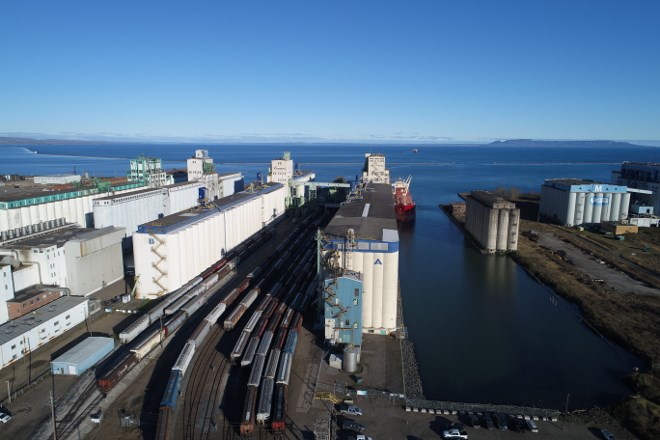The Port of Thunder Bay is a diverse port, serving as an export point for grain, coal, potash, and forest products and an inbound destination for other dry bulk such as stone and salt, liquid bulk products, general and project cargo.
The port has become a hub for dimensional and heavy-lift project cargo shipments for Western Canadian destinations. Success in this initiative stems from both the port’s strategic location and its competitive, value-added services and facilities. The port has established itself as a competitive supply chain link for accessing the Oilsands, energy projects, mine sites and construction projects. Thunder Bay is a viable alternative to more congested ports and has the closest proximity by land to Western Canada of any port east of the Rockies.
Project and general cargo shipments are handled at a sprawling facility with direct access to Canadian National and Canadian Pacific railways, as well as the TransCanada Highway and U.S. highways. The terminal is equipped with a Liebherr mobile harbour crane and a toplifter for cargo handling. A $15-million terminal reconfiguration project is underway that includes construction of an additional 50,000 square feet of heated cargo storage, cargo laydown area expansion and rail upgrades. The Port received contributions for the reconfiguration project, which is slated for completion in 2020, from the National Trade Corridors Fund and the Northern Ontario Heritage Fund Corporation.
The Port of Thunder Bay is an important economic driver for the Thunder Bay region, contributing $370 million annually to the local economy and directly employing 1,000 people.
2018 Recap
The final vessel of the shipping season, MV Kaministiqua, departed the Port of Thunder Bay Sunday, Jan. 13, capping off a busy end to another good year at the Lake Superior port. Kaministiqua headed for Windsor with a load of canola from the Canadian Prairies.
Kaministiqua was one of 65 vessels to call on the port during the final month of the shipping season, besting the tally of 49 from last year. Port facilities demonstrated capability and efficiency in December; the port had its third-best month of the last 20 years with nearly 1.5 million metric tonnes of cargo crossing docks.
Prairie-grown grain accounted for the majority of the total; the large sum of grain exported in December brought the port’s annual grain haul to 7.4 million tonnes, up from 7.3 million the prior season.
Annual shipments of coal and potash from Western Canada were strong as well. Combined, these shipments amounted to 1.13 million tonnes, which is 20% above the five-year average. The potash tally was the second highest of the past decade; only last year was higher.
Movement of other dry bulk and liquid bulk was slower than previous years in the port and accounted for the slight (1%) drop in the port’s overall cargo tonnage from 8.82 million tonnes in 2017 to 8.74 million tonnes in 2018.
The port’s general cargo facility handled a diverse slate of dimensional cargoes in 2018, ranging from structural steel and rail to windmills to modular buildings.
This advertising feature has been paid for and provided by the Port of Thunder Bay.




